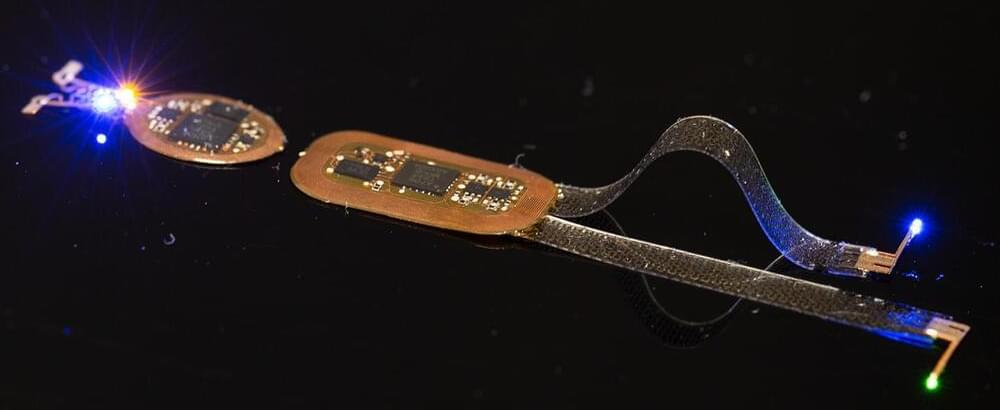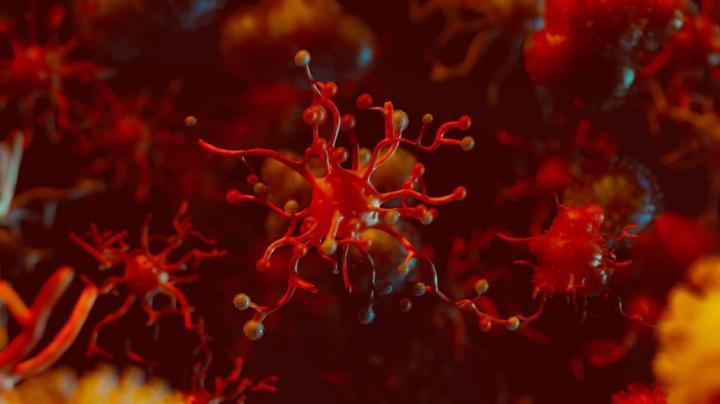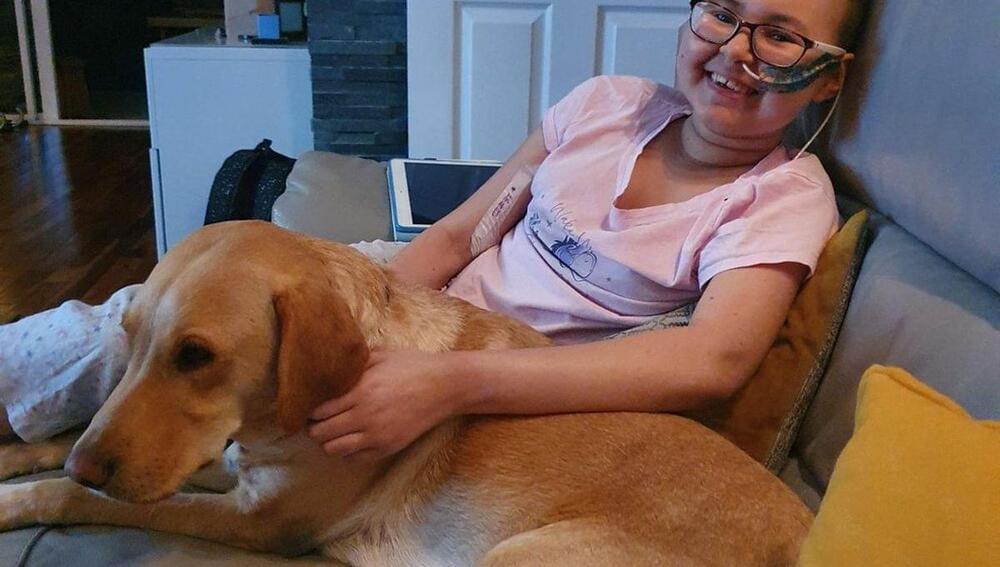The year 2022 was the 200th anniversary of the birth of Gregor Mendel. He’s known as the father of genetics, so scientists exhumed Mendel’s body and examined his DNA.
Category: genetics – Page 263

Genomics pioneer George Church, former Kindred Bio execs launch CRISPR-designed pets company AdoraPet Biosciences
A Peninsula biotech startup cofounded by pioneering geneticist George Church — who already is working to engineer the woolly mammoth out of extinction — is trying to raise as much as $5 million in a crowdfunding effort to design healthier, longer-living pets.
AdoraPet Biosciences Inc. of San Mateo plans to apply the genome-engineering CRISPR technology at the egg stage of dogs and cats or insert CRISPR-modified DNA into eggs, to make nonallergenic pets that don’t shed and ultimately live longer, are free of genetic diseases caused by inbreeding and are resistant to cancer and other serious diseases.

Trillions of tiny, self-replicating satellites could unlock interstellar travel
Alpha Centauri, here we come.
However, while technology has indeed advanced a long way since the 1940s, it still seems like we are still a long way from having a fully functional von Neumann machine. That is unless you turn to biology. Even simple biological systems can perform absolutely mind-blowing feats of chemical synthesis. And there are few people in the world today who know that better than George Church. The geneticist from Harvard has been at the forefront of a revolution in the biological sciences over the last 30 years. Now, he’s published a new paper in Astrobiology musing about how biology could aid in creating a pico-scale system that could potentially explore other star systems at next to no cost.
“Pico-scale” in this context means weighing on the order of one pico-gram. Since the smallest operational satellite ever created so far weighed a mere 33 grams, scaling that down to 10–12 times that size might sound ambitious. But that’s precisely what biological systems could potentially do.
A typical bacteria weighs right around one pico-gram. And with sufficiently advanced genetic modification, bacteria can do anything from processing toxic waste to emitting light. Therefore, Dr. Church thinks they might make an excellent interstellar exploration tool.
Applying CRISPR Tech to Edit the Code of Life | Dr. Jennifer Doudna | GZERO World with Ian Bremmer
Nobel winner Jennifer Doudna explains CRISPR, the gene-editing technology she pioneered.
Berkeley scientist Jennifer Doudna won the 2020 Nobel Prize for her work on the revolutionary gene-editing technology known as CRISPR. It has the potential to cure genetic diseases like sickle cell anemia and hereditary blindness and may even be used to treat cancer and HIV. But when it comes to editing humanity, where do we draw the line? How do we avoid falling into the same kind of dystopian nightmare outlined in Blade Runner? Doudna discussed the risks and benefits of CRISPR in an interview with Ian Bremmer on GZERO World. Also in this episode: a look at cloning our pets (speaking of going too far…).
Sign up for GZERO’s free newsletter on global politics, Signal: http://bit.ly/gzerosignal.
Like GZERO on Facebook: https://www.facebook.com/gzeromedia/
Follow GZERO on Twitter: https://twitter.com/gzeromedia.
Follow GZERO on LinkedIn: https://www.linkedin.com/company/18385722/
GZERO Media is a multimedia publisher providing news, insights and commentary on the events shaping our world. Our properties include GZERO World with Ian Bremmer, our newsletter Signal, Puppet Regime, the GZERO World Podcast, In 60 Seconds and GZEROMedia.com.
#GZEROWorld #CRISPR #GeneEditing #JenniferDoudna #NobelLaureate

From chronic to aggressive, how blood cancer in some can progress as a disease
The researchers conducted a deep dive into the genetics of these tumours, both during the slow chronic phase and after the disease had transformed into the aggressive form. Researchers have identified an important transition point in the shift from chronic to aggressive blood cancer by conducting experiments in mice, providing a new intervention point for hampering the progress of the disease, according to a study.

Native Americans Are Not Who We Thought They Were, Study Suggest
A widely believed theory about the origins of Native Americans has been dealt a huge blow by a new genetic analysis of ancient teeth, implying the ancient inhabitants of what is now America were not who we thought they were.
The theory, largely based on archaeological evidence found at Native American sites, claims that the First Peoples came to the continent from Japan around 15,000 years ago. Stone tools and other stone artifacts used by Native Americans show similarities to those of the Jōmon people, a diverse hunter-gatherer people who lived in ancient Japan from around 14,000–300 BCE.
Based on this and analysis of their migration across the continent, it’s been suggested that Native Americans made their way across the northern rim of the Pacific Ocean, across the Bering Land Bridge – dry land that connected Siberia and Alaska during the last ice age – until they reached the northwest coast of North America.

Experimental Gene Therapy Cures Teen’s “Incurable” Cancer
Reposting 😗
Thanks to a new experimental gene therapy, one teen’s previously incurable leukemia is now entirely undetectable, marking an incredible breakthrough in genetic immunotherapies. Alyssa, 13, from Leicester in the UK, was told that the only remaining options were end-of-life care to ensure she was comfortable as the aggressive T-cell acute lymphoblastic leukemia took hold – but the experimental CAR-T base editing therapy was able to modify her immune system to clear all detectable cancer cells.
T-cell lymphoblastic leukemia is a type of cancer that affects T-lymphocytes, an immune white blood cell that is created in the bone marrow. In this type of fast-moving leukemia, these cells divide uncontrollably and enter the bloodstream, traveling to the liver, spleen, and lymph nodes. This can cause death in a short span of just months or even weeks without treatment.
Currently, standard care procedures involve chemotherapy and a bone marrow transplant, which is an infamously difficult procedure. In Alyssa’s case, both of these treatments failed.

We’ve Discovered A Subtle Genetic Imbalance That May Drive Aging
Scientists have found an extremely subtle twist in the genetics of aging cells, one that seems to make them increasingly less functional as time goes on.
R esearchers from Northwestern University have revealed animals like mice, rats, killifish, and even humans show a gradual imbalance of long and short genes in virtually every cell in their body as they age.
The discovery suggests there aren’t specific genes that control the aging process. Instead, old age seems to be governed by systems-level changes with complex effects. And this can impact thousands of different genes and their respective proteins.

Alzheimer’s Mystery Solved: “Angry” Immune Cells in Brain and Spinal Fluid Identified As Culprit
Gate’s team of scientists observed genetic changes in the CSF immune cells in older healthy individuals that made the cells appear more activated and inflamed with advanced age.
“The immune cells appear to be a little angry in older individuals,” Gate said. “We think this anger might make these cells less functional, resulting in dysregulation of the brain’s immune system.”
In the cognitively impaired group, inflamed T-cells cloned themselves and flowed into the CSF and brain as if they were following a radio signal, Gate said. Scientists found the cells had an overabundance of a cell receptor — CXCR6 — that acts as an antenna. This receptor receives a signal — CXCL16 — from the degenerating brain’s microglia cells to enter the brain.